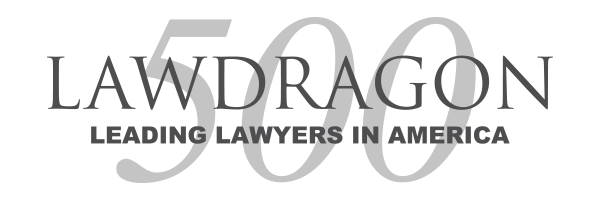College Sports: A New Gilded Age
In 1969, Curt Flood, center fielder for the St. Louis Cardinals, was traded to the Philadelphia Phillies. Flood, who was black, knew that the Phillies reportedly had some of the most racist fans in baseball and expressed his concerns to management. At the time, Major League Baseball’s rules tied the player to the team; he had to move where management sent him or not play at all.
Flood sent a letter to then Baseball Commissioner Bowie Kuhn, saying, “I do not feel I am a piece of property to be bought and sold irrespective of my wishes. I believe that any system which produces that result violates my basic rights as a citizen and is inconsistent with the laws of the United States.”
These are strong words, but to many in professional baseball at the time, the rules tying a player to his team sounded an awful lot like slavery; players were bought and sold as a commodity.
Flood sued and took his case all the way to the U.S. Supreme Court. The court ruled against him, but the case set the stage for future negotiations that gave players the right to contract with any team they wished.
Recently, I saw a fascinating article in The Atlantic that reminded me of Curt Flood. Taylor Branch, a noted Civil Rights historian, wrote a piece titled “The Shame of College Sports.” in which he exposes some of the scandals and hypocrisies in college sports.
Many of the injustices that Flood and others succeeded in ending pale in comparison to the scandals still ongoing in college sports.
The worst of these scandals, which threatens to topple the NCAA, is that the organization collects millions upon millions in revenue each year, profits earned off the back of student-athletes. Those student athletes are plastered with corporate logos and sold to the public, but they are not paid for their services.
Branch stops just short of calling this system slavery, but he does conclude that “to survey the scene – corporations and universities enriching themselves on the backs of uncompensated young men … is to catch an unmistakable whiff of the plantation.”
I don’t think there is a moral equivalence between the NCAA and slaveholders, but the conditions for student athletes today certainly compare to another time period in American history; the gilded age. Throughout the industrial revolution and especially during the last 30 years of the 19th century, American workers found themselves slaves in all but one sense; they at least had a theoretical option to leave the job site and look for work elsewhere.
Of course, in practice, the decreased demand for unskilled labor brought about by automation meant that workers had no other option but to accept long work hours and unsafe working conditions in exchange for a low, unlivable wage.
If workers did strike, they could be assured that strikebreakers would be brought in immediately, sometimes with the support of the government. Jay Gould, a railroad owner and one of the richest businessmen in the second half of the 19th century, once said after bringing in strikebreakers, “I can hire one half of the working class to kill the other half.”
You probably won’t hear NCAA executives talking like that about student athletes, but the systems share many similarities.
Consider one of the first reforms passed in the wake of the worst abuses: workers’ compensation. During the industrial revolution, workers routinely found themselves in unsafe working conditions. They operated hazardous machinery in factories and breathed in toxic dust in mines. Cutthroat factory owners responded to injuries by firing workers and replacing them.
Today, high school recruits choose which college to attend, at least partially, based on that school’s scholarship offer. For lower- or middle-class athletes, the prospect of a scholarship is a dream come true, allowing them to earn a degree they otherwise might be unable to afford.
Yet, these student athletes, who the NCAA constantly reminds us are students first and athletes second, are forced to give up their scholarships when injured on the field.
We are currently litigating a case on behalf of a young man named Joseph Agnew. A highly sought-after high school football prospect from Texas, Agnew was courted by several top-tier Division I schools. He ultimately decided to accept a full-ride scholarship from Rice University.
We allege that during his sophomore season with Rice, Agnew sustained shoulder and ankle injuries on the field, and, as a result, his scholarship was revoked. Our case on behalf of Agnew is still working its way through the courts.
The way student athletes are compensated also bears a striking resemblance to the gilded age. One could draw a strong comparison between scholarships and the “company money” given to workers in some industrial towns.
Instead of being paid real wages, workers were often given company money, good only for buying goods and services from a company store. This allowed scrupulous robber barons to avoid paying workers a real wage and created a closed loop that allows them to profit again, selling workers goods at inflated prices.
Consider the scholarships that are given to student athletes today. Scholarships can only be used to pay for tuition at the institution offering the scholarship. Just like in company towns during the gilded age, the employer, or in this case, the university, profits without ever having to pay a real wage.
This practice illuminates the greatest problem with the NCAA today, the massive discrepancy between what student athletes earn for their work in the form of scholarships and what their services are worth.
By any estimation, the talents of student athletes are worth millions to the NCAA and its member universities. Revenue rolls in continuously from lucrative television deals, sponsorships, merchandising and even video game licensing.
That last revenue source is especially troubling, because students’ likenesses were featured in the games. A few years ago, we filed a lawsuit on behalf of a former starting Arizona State quarterback named Sam Keller, who alleged that the NCAA violated its own bylaws by conspiring with a video game company to use students’ likenesses, making millions off students who were not compensated.
Meanwhile, at the professional level, the NFL Players’ Association is paid $35 million each year for the right to show players’ likenesses in NFL video games.
All of these injustices demonstrate a system in serious need of reform. Student athletes have been made to suffer under this system for far too long.
I am hopeful, though, that change is coming. I believe that the NCAA will be forced by the outcry from politicians, educators and the public to reform its operations in the coming years.
Such reform will come not a minute too soon for thousands of student athletes, who deserve fair treatment and compensation for the services they provide to their schools.





